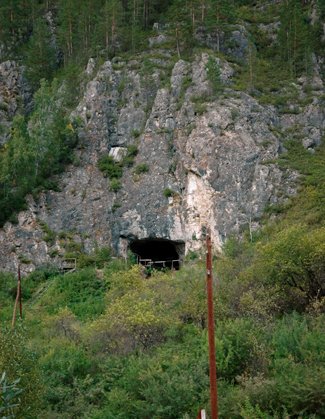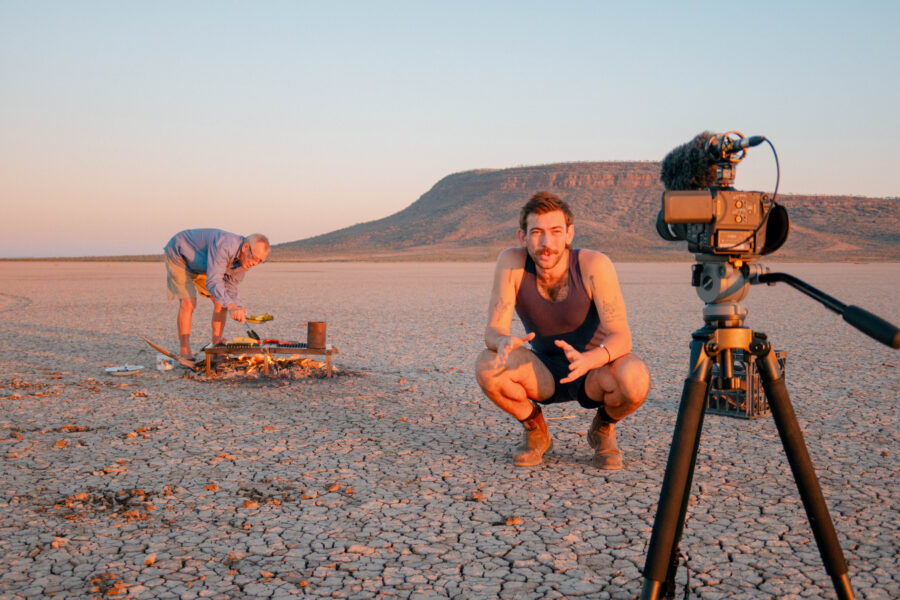Clever sub-species bred with ancient Australians

THE MOST RECENTLY DISCOVERED human relatives, the Denisovans, may have crossed a treacherous marine barrier in Indonesia and interbred with the ancestors of Aboriginal Australians, researchers say.
Scientists from Australia and the UK have proposed that a human-like species known as Denisovans (Denisova hominin), discovered in Denisova Cave, Siberia in 2010, crossed the Wallace Line, one of the world’s most prominent marine borders between South-eastern Asia and Australia.
The article follows a new genetic study that found little evidence of Denisovan DNA on mainland Asia, but traces in Indigenous populations in Australia and Papua New Guinea.
“Knowing that the Denisovans spread beyond this significant sea barrier opens up all sorts of questions about the behaviours and capabilities of this group, and how far they could have spread,” says Chris Stringer, an anthropologist at the Natural History Museum in London and co-author of the article.
Ancient subspecies may have crossed the Wallace Line
Several years ago, genetic sequencing of a 40,000-year-old finger bone and three teeth found in a remote cave in Siberia revealed a new human subspecies — the Denisovans. Further genetic testing suggested that the Denisovan population was extensive, and had a higher genetic diversity than the closely-related Neanderthals.
Following this discovery, scientists tested the DNA of modern human populations across the world to see whether the Denisovans interbred with humans. The results suggested that indigenous peoples from Australia and Papua New Guinea had amounts of Denisovan DNA, at low levels of around 4-6%.
It was initially thought that interbreeding between Denisovans and humans occurred in Asia, where the fossils were located, before the genes were carried to Australia and New Guinea through migration. But scientists couldn’t explain why there was so little Denisovan DNA present in human populations from Asia.
“It didn’t make sense that ancient human specimens in Asia appeared to have little or no Denisovan DNA in them,” explains Alan Cooper, a molecular evolutionist at the University of Adelaide and lead author of the article.
“We’re suggesting the interbreeding didn’t happen on mainland Asia because if it did, we would see the genetic signs in that area.”
Strength and ability of the Denisovans
Very little is known about what the Denisovans looked like. However, Alan says the crossing of the Wallace Line, which runs up the east coast of Borneo and has always been a marine barrier, indicates something about the ability of this archaic human relative.
“Even tens of thousands of years ago, Wallace’s Line was a very significant barrier,” says Alan. “Crossing that would take intent and skill.” The findings were published this week in the journal Science.
Darren Curnoe, an evolutionary biologist at the University of New South Wales in Sydney, says there is a lack of evidence to support the hypothesis.
“There is no evidence from the fossil record of the Denisovans living anywhere except at a single site in the Altai Mountains of Siberia,” Darren told Australian Geographic.
“We also don’t know anything about their ecological range beyond that cave, let alone whether they lived east of the Wallace Line.
“While the idea that modern humans interbred with other species during the settlement of East Asia is a very interesting case, it is far from settled.”
RELATED STORIES
Were Neanderthal people cooks and medics?
Footprints reveal how early humans first walked
Oldest ape fossils hold clues to evolution
World’s oldest fossils found in the Pilbara
Mystery bird fossil found in the Nullarbor
Carnivorous bilby fossil unearthed
Sabre-toothed bandicoot fossil found
Fossil of weird snail-eating marsupial found
Giant prehistoric snake snacked on baby dinosaurs
The dinosaur musterers
Archaeopteryx knocked-off evolutionary perch
Fearsome giant turtles found in Pacific cemetery
On this day: stolen dinosaur footprint discovered
Oldest Australian DNA etched from eggshells
More stories on fossils…




